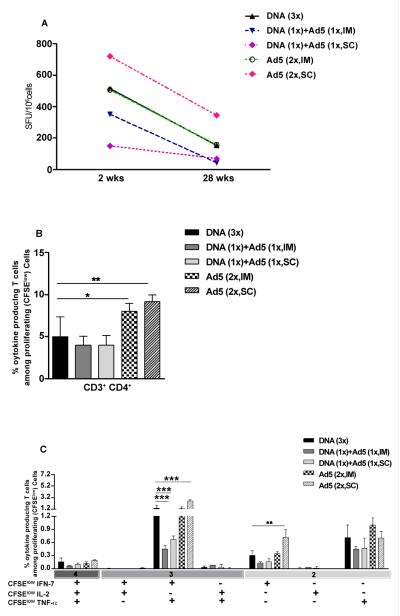Figure 5. Ad5-HIVBr18 immunization induces higher numbers of polyfunctional T cells up to 28 weeks after the last immunization.
BALB/c mice were immunized as described earlier. Twenty eight weeks after the last immunization, splenocytes from BALB/c mice (6 per group) were pooled and specific immune responses were evaluated in vitro against pooled HIV-1 peptides. (A) Frequencies of IFN-γ secreting cells measured by ELISPOT. (B) Spleen cells were labeled with CFSE (1.25 μM) and cultured for 4 days in the presence of pooled HIV-1 peptides or medium only. On day 4, cells were pulsed for 12 hours with pooled peptides in the presence of costimulatory antibody and Brefeldin A. Cells were then surface stained with antibodies to CD4 and CD8, permeabilized and stained for intracellular cytokines and CD3. Total frequencies of proliferating (CFSElow) and cytokine-producing CD4+ T cells are shown. (C). Values from control groups (pVAX1 and/or Ad5-βgal) were subtracted from experimental groups and are not depicted. DNA= HIVBr18; Ad5= adenovirus 5 encoding HIVBr18. DNA vs DNA (1x) + Ad5 (1x, IM), p<0.001; DNA vs DNA (1x) + Ad5 (1x, SC), p<0.001; DNA vs Ad5 (2x, SC), p<0.001.

